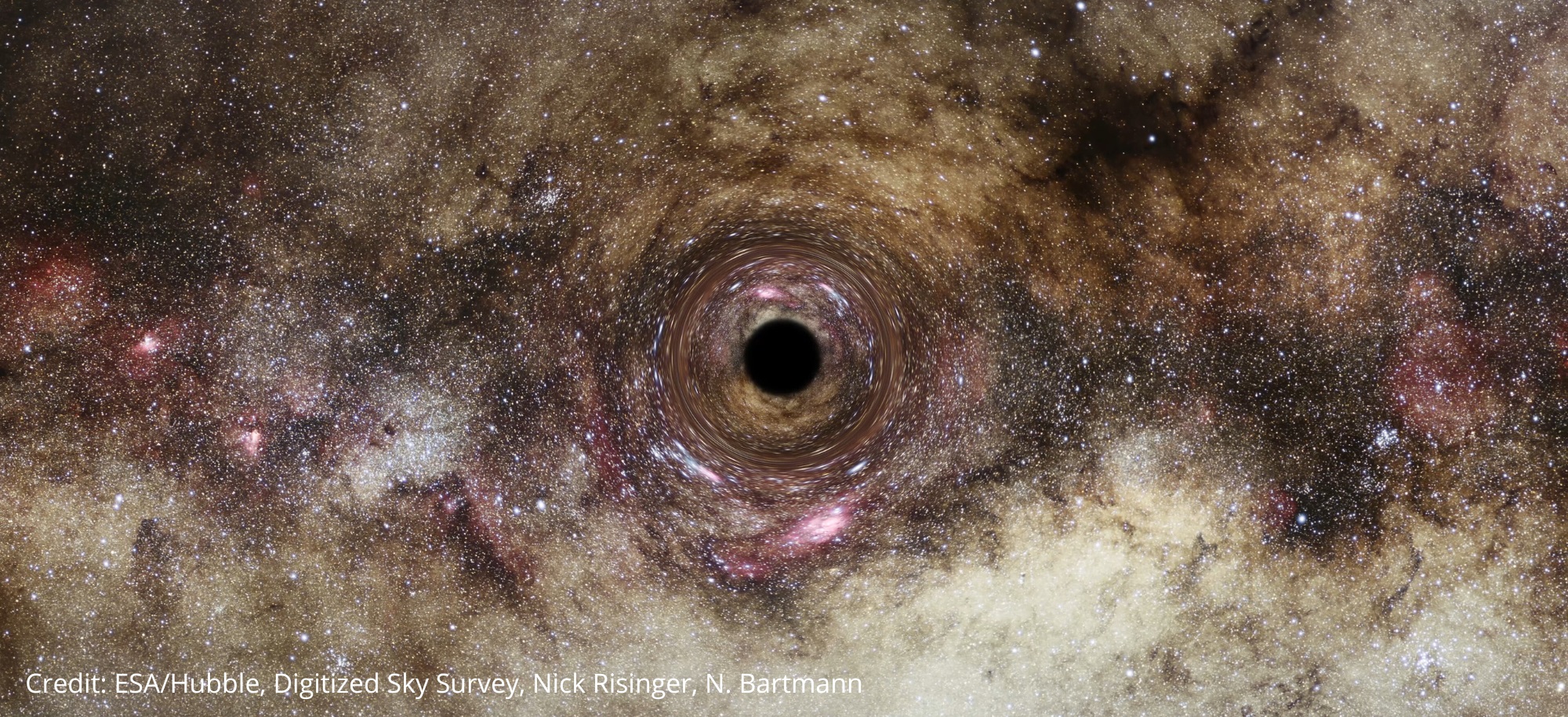In 1931, Indian-American physicist Subrahmanyan Chandrasekhar proposed a resolution to Einstein’s Theory of General Relativity that postulated the existence of black holes. By 1972, astronomers obtained the first conclusive evidence that these objects existed in our Universe. Observations of quasars and the center of the Milky Way also revealed that most massive galaxies have supermassive black holes (SMBHs) at their cores. Since then, the study of black holes has revealed that these objects vary in size and mass, ranging from micro black holes (MBHs) and intermediate black holes (IMBHs) to SMBHs.
Using astronomical simulations and a technique known as Gravitational Lensing, an international team of astrophysicists detected what could be the largest black hole ever observed. This ultramassive black hole (UMBH) has a mass roughly 30 billion times that of our Sun and is located near the center of the Abell 1201 galaxy cluster, roughly 2.7 billion light-years from Earth. This is the first time a black hole has been found using Gravitational Lensing, and it could enable studies that look farther into space to find black holes and deepen our understanding of their size and scale.
The study was conducted by researchers from the Centre for Extragalactic Astronomy (CEA) at Durham University, the Max Planck Institute for Astrophysics (MPIA), and NASA’s Ames Research Center. It was led by Dr. James Nightingale, a post-doctoral research associate at the CEA, with support provided by the UK Space Agency (UKSA), the Royal Society, the Science and Technology Facilities Council (STFC), and the European Research Council (ERC). A paper that describes their findings recently appeared in the Monthly Notices of the Royal Astronomical Society.

Gravitational Lensing (GL) refers to a phenomenon predicted by General Relativity, which describes how spacetime curvature is warped by the presence of massive objects. This technique involves astronomers using massive objects in the foreground (like galaxies or galaxy clusters) to amplify light from more distant objects. This enables astronomers to study objects that would otherwise be inaccessible to them, either because of distance or the presence of other objects along the same line of sight. This technique also allows astronomers to study distant objects in greater detail, such as the Abell 1201 cluster.
Dr. Nightingale and his associates began studying this cluster in 2004 when Prof. Alastair Edge, a fellow Durham University astronomer and a co-author of this paper, reviewed images of a galactic survey and noticed a giant lens in its vicinity. For this study, Dr. Nightingale, Prof. Edge, and their colleagues consulted data from the Hubble Space Telescope (HST) in multiple bands – including visible light, X-rays, and other wavelengths. Following up on what Hubble saw years ago, the team compared the data to simulations on the new DiRAC COSmology MAchine 8 (COSMA8) supercomputer facilities at Durham University.
Using open-source software (PyAutoLens) that astronomers rely on to model strong lenses, the team simulated light traveling between Abell 2021 and Earth thousands of times. Each simulation included a black hole with a different mass and how this would influence the way the light traveled over 2.7 billion years to reach Earth. Their results showed that a UMBH located in the foreground galaxy, over 30 billion times as massive as our Sun, would account for what Hubble saw. Astronomers rarely see black holes this massive, and this find (if confirmed) would constitute the largest black hole ever detected.
On top of that, it was the first time astronomers used the GL technique to detect such a massive black hole. What’s more, it could help astronomers learn more about UMBHs and dormant black holes in the future. Ordinarily, astronomers are largely restricted to studying active black holes because of how bright they are in multiple wavelengths. This is caused by gas and dust being pulled in toward black holes and forming tightly-bound disks that are accelerated to velocities approaching the speed of light (aka. relativistic speed).
This causes the material in the disk to become highly energetic, emitting radiation in visible light, infrared, X-rays, radio waves, and other wavelengths. The same occurs when the material infalls and is accreted onto the face of the black hole, being torn apart at the subatomic level. This is characteristic of Active Galactic Nuclei (AGN), where a galaxy’s center shines brighter than all the stars in the galactic disks. This study has shown how dormant black holes, which are significantly less luminous, can be inferred by the presence of a powerful GL.
The team hopes that this study will lead to deeper explorations of black holes, which will benefit from the new class of 30-meter telescopes that will become operational in the near future. These include the Extremely Large Telescope (ELT), the Giant Magellan Telescope (GMT), and the Thirty Meter Telescope (TMT), which will combine greater sensitivity with adaptive optics and interferometers. Along with improved data analysis and new methods, astronomers will likely be able to study even more distant black holes and gain additional insights into these behemoths.
Further Reading: Durham University, MNRAS

